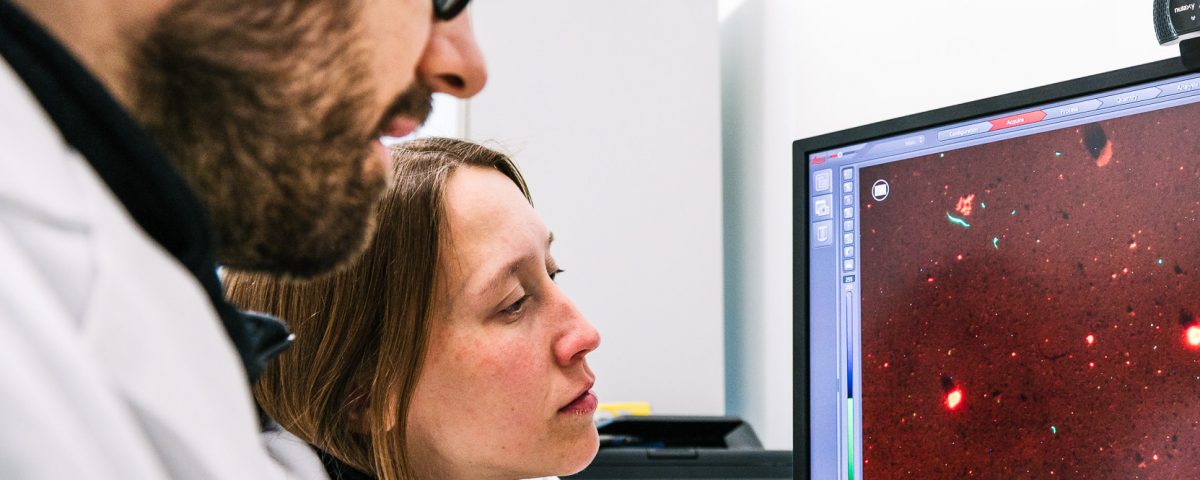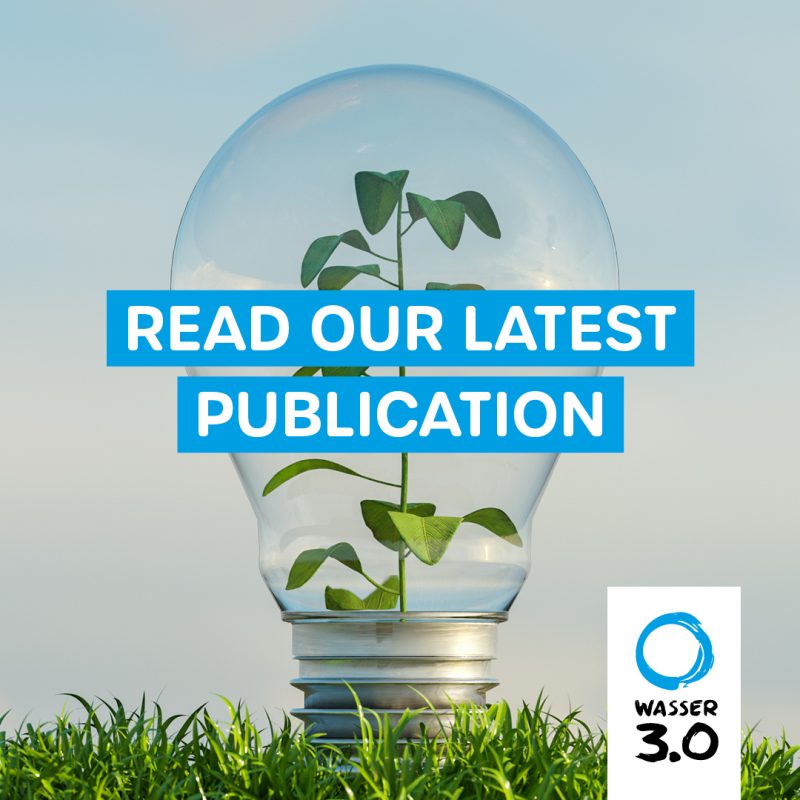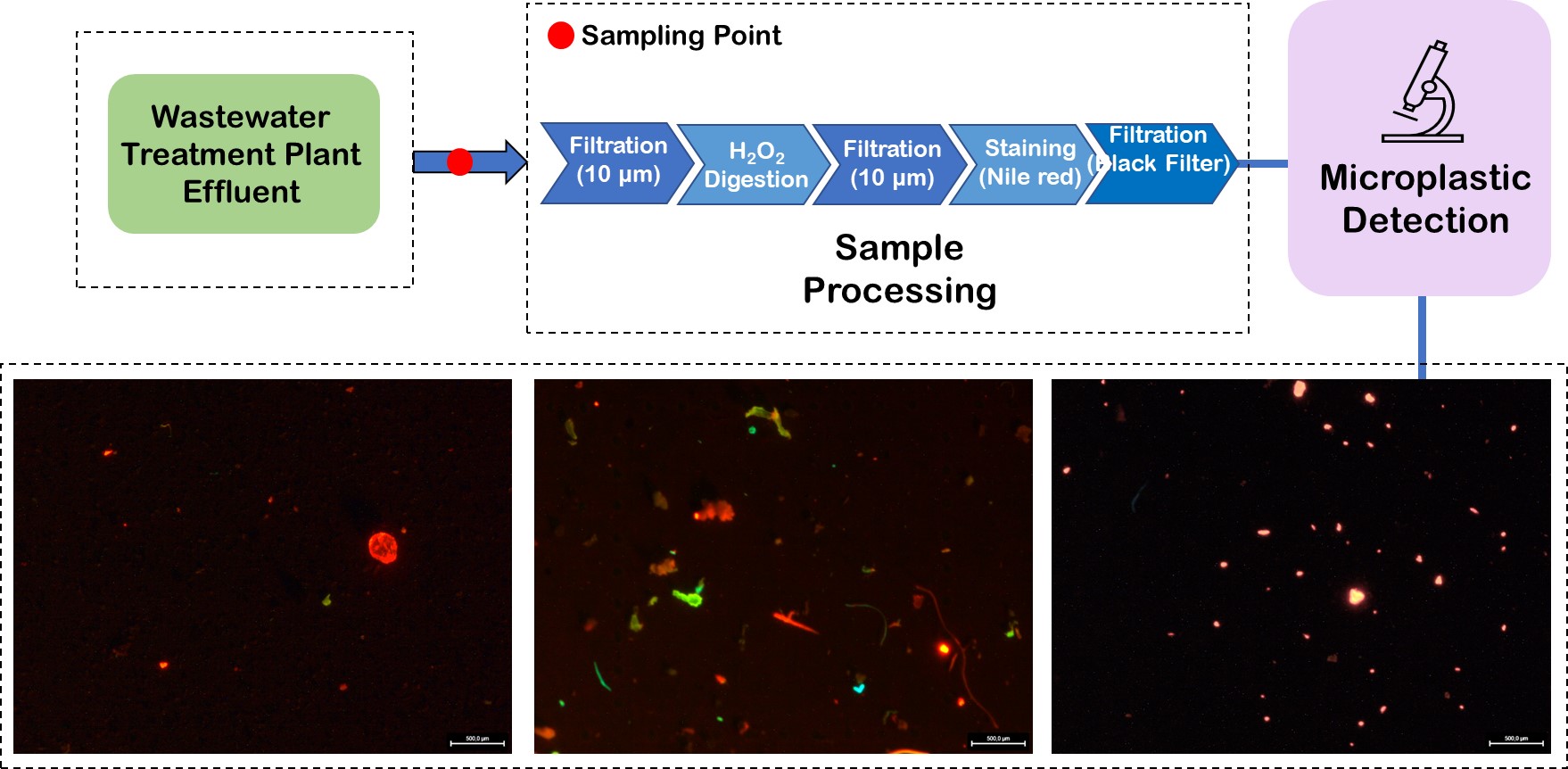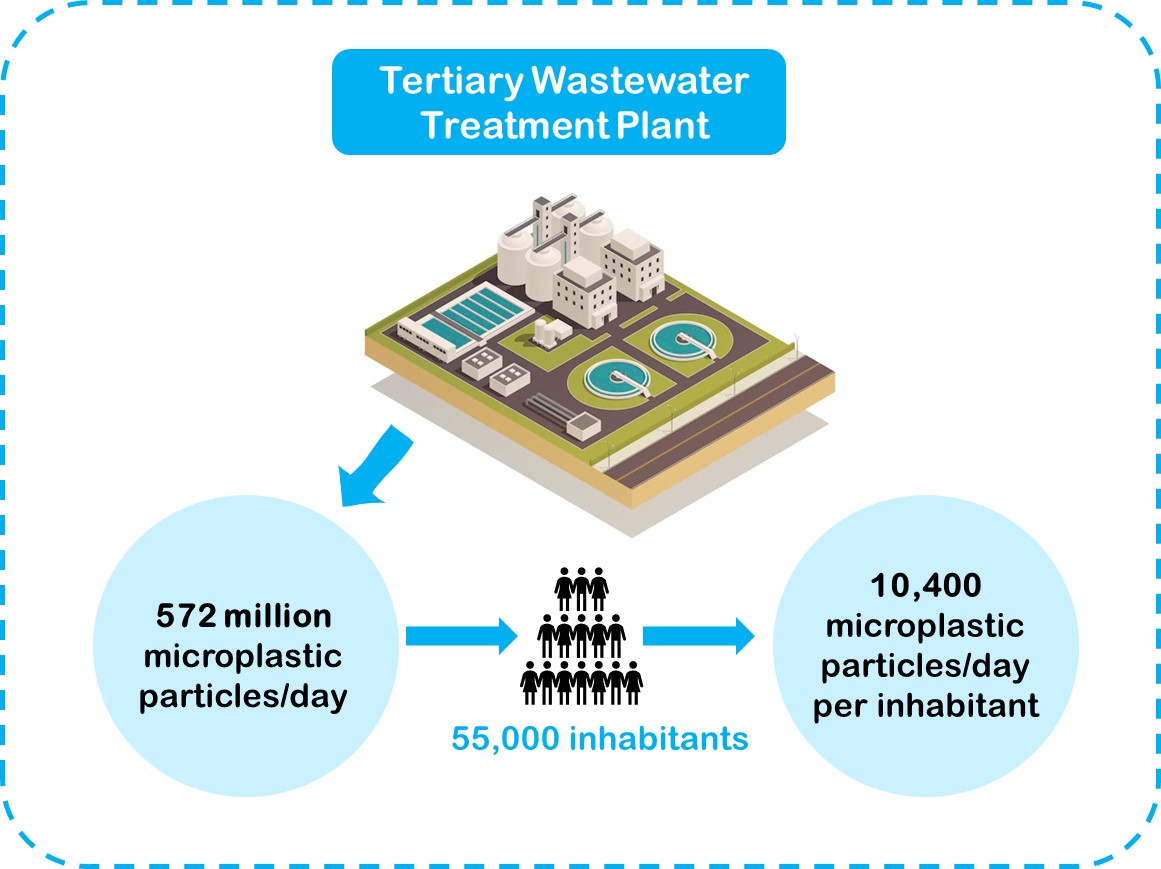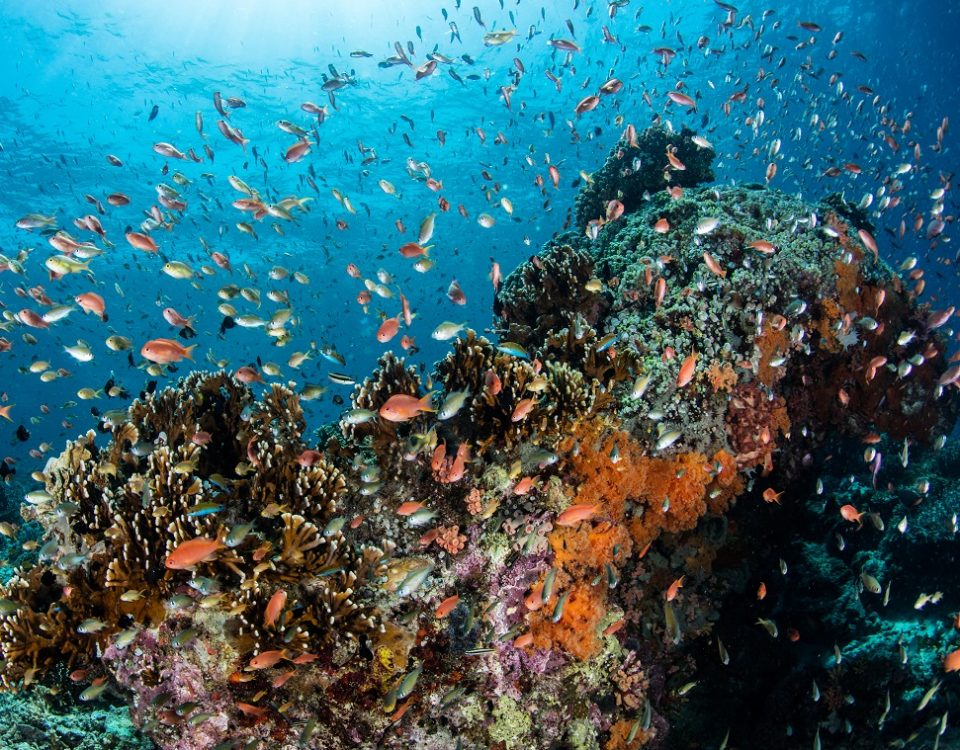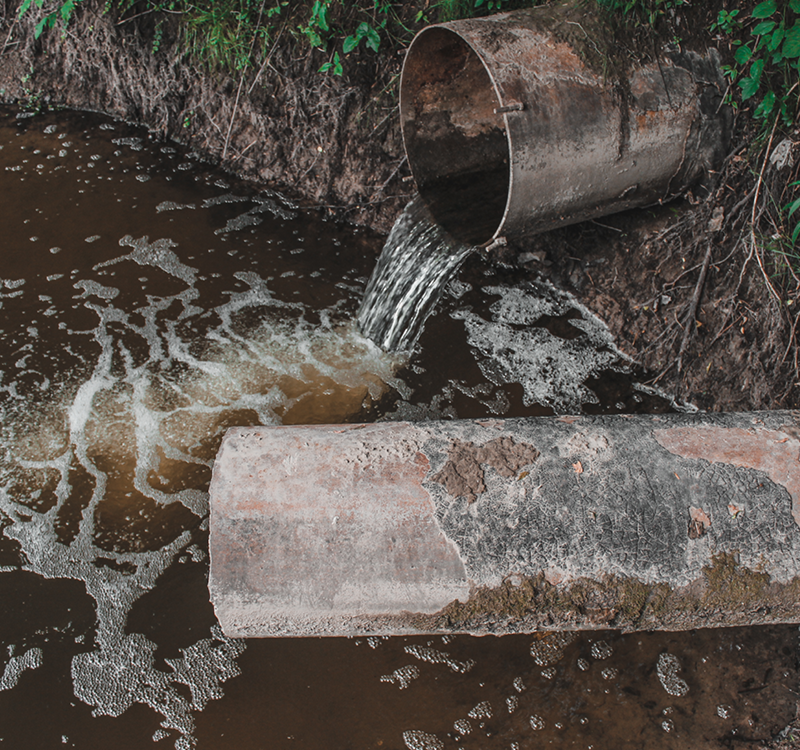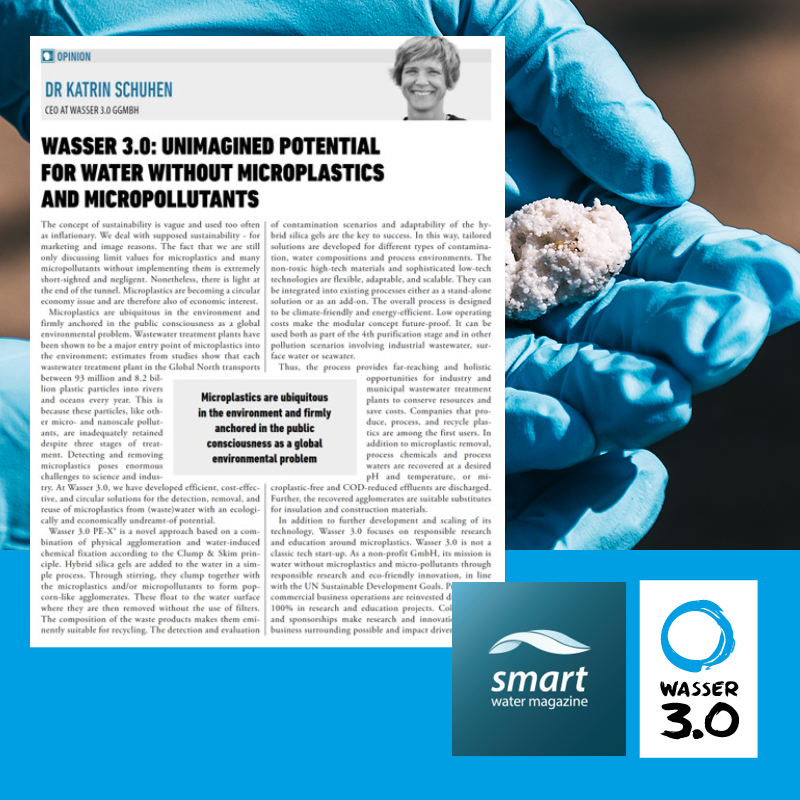
Unlock Potentials for Water without Microplastics
1. February 2023
Outlook for World Water Day
1. March 2023Further developments in the field of microplastics detection
Microplastic detection is essential to evaluate the risk potentials and pathways of microplastics in the environment.
But until now, a wide variety of sampling and analytical methods are used, making it almost impossible to compare results among studies.
A standardized detection method is thus essential to collect comparable and reliable data on microplastic pollution levels and identify hotspots, which is critical for the development and implementation of impactful limit values and binding regulations.
New insights into our microplastics detection method, enabling routine, cost-effective, and reliable monitoring of microplastic levels.
We aim to detect and quantify microplastics in water in a simple process step that enables routine and verifiable monitoring of microplastic levels and process control of microplastic removal. We have developed a complete procedure, from sample collection through sample processing to detection, to measure microplastics with low cost and time requirements. Our standardized procedure was used to measure microplastic levels over a period of one year at the wastewater treatment plant in Landau, Germany, to determine its potential to collect comparable and reliable data on microplastic levels, with results recently published open-access in MDPI Analytica.
Standardized detection of microplastics – a necessary step towards microplastic regulations
Microplastic detection is essential to evaluate the risk potentials and transport pathways of microplastics in the environment and to obtain reliable long-term data on microplastic levels. This is critical for the development of impactful policies. Without valid, comparable data, no limit values can be established, and regulations are not put in place.
But until now, a wide variety of sampling and analytical methods are used, making it almost impossible to compare results among studies. In addition, commonly applied methods are time consuming and depend on expensive and complex measurement devices, which makes the detection process expensive. Thus, the lack of standardized and affordable methods for microplastic detection is one of the biggest challenges in microplastics research and for implementation in industry.
What is the status quo regarding microplastics detection?
The detection of microplastics is divided into three main steps: sampling, sample preparation and detection. Due to the lack of standardization, the resulting measured microplastic contamination levels can vary significantly among studies. Variations and sample detection errors may be caused by:
- Varying mesh sizes used for sample collection, from 1-500 µm
- Potential contamination during sample preparation (i.e. from clothing, lab benches, air)
- False positives during detection due to natural particles or other anthropogenic particles
Many conventional methods for microplastic detection, such as FT-IR and Raman spectroscopy with microscope used for chemical identification of microplastics are complicated, time consuming and expensive. It can take between one and four weeks to receive analytical results, making them impractical for continuous process monitoring and control in water treatment. And as external influences have a large impact on the amount of microplastics entering wastewater treatment plants, resulting in regular fluctuations and temporal variations in microplastic levels, a quick test for the detection of microplastics in different waters is helpful for simple and cost-effective process control that also protects the environment.
What is our approach to microplastic detection?
Our ideal detection of microplastics in water is easy to use, fast, and cost-effective, enabling regular and efficient monitoring and analysis that is comparable across studies. Fluorescent staining of microplastics is thus an ideal detection method, due to the low technical effort, time, and costs required.
In our study, we developed and tested a standardized sampling procedure (sample collection + preparation + microplastics detection) that requires less than 45 minutes of working time per sample. The detection is based on a newly developed Nile red derivate for improved fluorescent staining of microplastics and automated particle counting to reduce errors and bias in counting. A low budget microscope modification was also compared to precise optical bandpass filters to determine if inexpensive methods are applicable.
Key findings from the study?
The long-term monitoring at the Landau WWTP showed that the sampling process can obtain comparable results with only 45 minutes working time per sample (including sample collection, preparation, and detection).
The microplastic levels showed significant temporal variations, ranging from 1 microplastic/L to 145 microplastic particles/L.
This resulted in an average of 572 million microplastic particles per day in the wastewater effluent, amounting to 209 billion microplastics per year.
With 55,000 inhabitants in the WWTP catchment, this corresponds to 10,400 microplastic particles per day per inhabitant.
This confirms that although WWTPs may remove up to 94% of microplastics from incoming waters, they are still a significant source of microplastics into the environment.
The detection process was also improved in the study, to enable more reliable microplastic monitoring by:
- Improved fluorescence with a new Nile red derivative.
- Automate particle counting.
- Comparison of an inexpensive filter, to enable more cost-effective microplastic monitoring.
Why is this method beneficial moving forwards? Why this is important for WWTPs
An increasing number of studies are revealing the numerous detrimental impacts that microplastics may have on human, wildlife, and ecosystem health. It is therefore critical to understand and identify the hotspots, or primary entry pathways, of microplastics into the environment and target their removal. Within our study, we observed an average of 572,000 microplastic particles per day entering the environment from a mid-size treatment plant alone; it is therefore clear to see why we need to begin removing microplastics from the source now, before concentrations in the environment continue to accumulate.
As WWTPs are recognized as one of the primary entry points, the recently revised Urban Wastewater Treatment Directive will require that microplastic concentrations are monitored in the influent and effluent of many wastewater treatment plants. This will require that a standardized detection method be determined. However, until now, microplastic monitoring is set to be only once or twice per year, which will fail to address the large temporal variations in microplastic concentrations.
Reliable long-term data on microplastic levels is key to understanding the risk potentials and entry pathways, and for establishing impactful regulations and limit values. But until now, a wide variety of analytical and sampling methods have been used. We are working to change that. Our microplastic detection method is cost-effective, reliable, and easy to implement without large investment costs or training. Further, it is a feasible method for wastewater treatment plants and industrial applications for continuous process monitoring and control in water treatment that would reduce the discharge of microplastic contaminated wastewater into the environment.
To help drive policy development and implement impactful microplastic limits, we require more long-term data on microplastic levels, re-validation of results, and the standardization of detection methods to compare results across studies. To ensure that we are able to continue our work on validating our detection results and developing microplastic removal strategies, sponsors and donations are welcome. If you would like to support us, you can find do so here or contact us directly.

